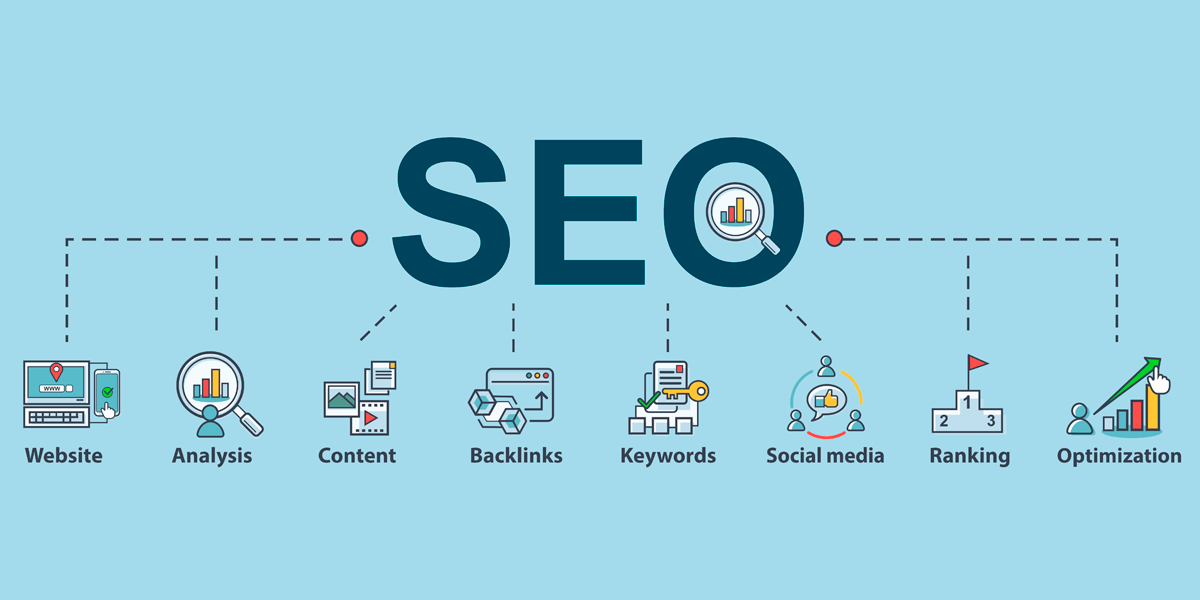Search Engine Optimization (SEO) is an essential component of digital marketing, focusing on improving your website’s visibility on search engines like Google. By optimizing your website, you can attract more organic traffic, enhance user experience, and ultimately drive conversions. This guide will provide you with actionable strategies to implement effective SEO for your website.
1. Conduct Keyword Research
Keyword research is the foundation of any successful SEO strategy. Start by identifying relevant keywords and phrases that potential customers might use to find your products or services.
- Tools to Use: Google Keyword Planner, Ahrefs, SEMrush, or Ubersuggest.
- Long-Tail Keywords: Focus on long-tail keywords (phrases with three or more words) that are specific to your niche. These often have lower competition and higher conversion rates.
2. Optimize On-Page SEO
On-page SEO involves optimizing individual pages to rank higher and earn more relevant traffic. Here are some key elements to focus on:
- Title Tags: Include your primary keyword and keep it under 60 characters.
- Meta Descriptions: Write compelling descriptions that summarize the page content and encourage clicks. Aim for 150-160 characters.
- Header Tags: Use H1 tags for your main title and H2/H3 tags for subheadings to structure your content effectively.
- Image Optimization: Use descriptive file names and alt text for images to improve accessibility and help search engines understand your content.
3. Create High-Quality Content
Content is king in the world of SEO. Your website should provide valuable, informative, and engaging content that addresses the needs of your audience.
- Regular Blogging: Start a blog to share insights, tips, and industry news. This not only helps with SEO but also establishes your authority in your niche.
- Use Multimedia: Incorporate images, videos, and infographics to make your content more engaging and shareable.
- User Intent: Understand the intent behind search queries and create content that fulfills that intent, whether it’s informational, navigational, or transactional.
4. Improve Website Speed and Mobile Friendliness
A fast-loading and mobile-friendly website enhances user experience and can positively impact your rankings.
- Page Speed: Use tools like Google PageSpeed Insights to analyze and improve loading times. Aim for a loading time of under three seconds.
- Responsive Design: Ensure your website is mobile-friendly by using a responsive design that adapts to different screen sizes.
5. Build Backlinks
Backlinks are links from other websites to yours and are a key factor in how search engines determine the authority of your site.
- Guest Blogging: Write guest posts for reputable sites in your industry and include links back to your website.
- Social Media Promotion: Share your content on social media platforms to increase visibility and encourage others to link to it.
- Network: Build relationships with influencers and industry leaders to earn backlinks naturally.
6. Utilize Technical SEO
Technical SEO focuses on the backend of your website and how well search engines can crawl and index it.
- XML Sitemap: Create and submit an XML sitemap to help search engines understand the structure of your site.
- Robots.txt File: Ensure your robots.txt file is set up correctly to guide search engines on which pages to crawl.
- HTTPS Security: Secure your website with an SSL certificate to protect user data and improve trustworthiness.
7. Monitor and Analyze Performance
Regularly tracking your website’s performance is crucial for ongoing SEO success.
- Google Analytics: Use Google Analytics to monitor traffic, user behavior, and conversion rates.
- Google Search Console: Track your site’s visibility, indexing status, and any potential issues that may arise.
Conclusion
Implementing effective SEO strategies takes time and effort, but the rewards are worth it. By following these steps, you can improve your website’s visibility, drive more traffic, and enhance user experience. Remember, SEO is an ongoing process, so keep up with the latest trends and continuously optimize your site for better results. Start your SEO journey today and watch your online presence grow!
